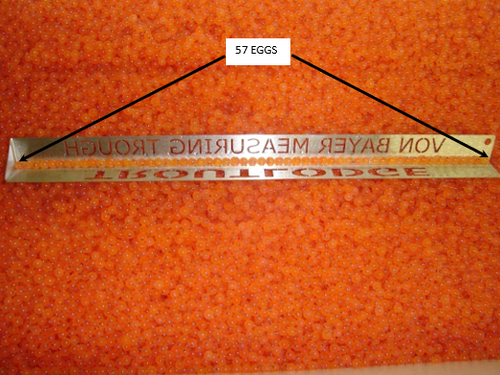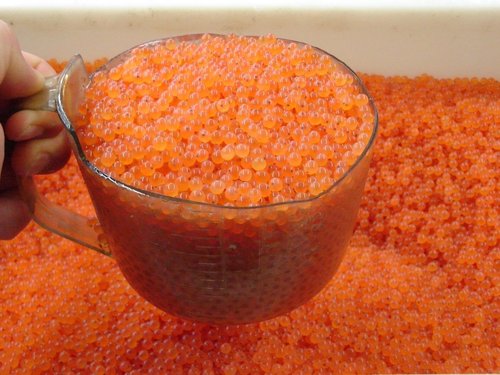Von Bayer Egg Counting Chart
go.ncsu.edu/readext?153927
en Español / em Português
El inglés es el idioma de control de esta página. En la medida en que haya algún conflicto entre la traducción al inglés y la traducción, el inglés prevalece.
Al hacer clic en el enlace de traducción se activa un servicio de traducción gratuito para convertir la página al español. Al igual que con cualquier traducción por Internet, la conversión no es sensible al contexto y puede que no traduzca el texto en su significado original. NC State Extension no garantiza la exactitud del texto traducido. Por favor, tenga en cuenta que algunas aplicaciones y/o servicios pueden no funcionar como se espera cuando se traducen.
Português
Inglês é o idioma de controle desta página. Na medida que haja algum conflito entre o texto original em Inglês e a tradução, o Inglês prevalece.
Ao clicar no link de tradução, um serviço gratuito de tradução será ativado para converter a página para o Português. Como em qualquer tradução pela internet, a conversão não é sensivel ao contexto e pode não ocorrer a tradução para o significado orginal. O serviço de Extensão da Carolina do Norte (NC State Extension) não garante a exatidão do texto traduzido. Por favor, observe que algumas funções ou serviços podem não funcionar como esperado após a tradução.
English
English is the controlling language of this page. To the extent there is any conflict between the English text and the translation, English controls.
Clicking on the translation link activates a free translation service to convert the page to Spanish. As with any Internet translation, the conversion is not context-sensitive and may not translate the text to its original meaning. NC State Extension does not guarantee the accuracy of the translated text. Please note that some applications and/or services may not function as expected when translated.
Collapse ▲The Von Bayer trough method
This method is quick, simple and accurate. It utilizes a trout egg measuring trough that is easily made but also available from many aquaculture suppliers.
The trough measures 30.5cm (12″) length (inside dimension), with a 45º bend and a depth of approximately 3.5cm (1.4″).

There are two steps in using the Von Bayer method
- First sizing the eggs
- Then counting the eggs
Sizing the eggs:
-
- Eggs during transit can become dehydrated and slightly smaller in size, so it is important to rehydrate the eggs in flowing water.
- Fill your Von Bayer trough with a single row of eggs.
- Use a non-sharp pointed object (pencil) to discard extra eggs from the trough. Do not force the eggs into the trough. The eggs should fit side-by-side, just touching, but there should not be any spaces.
- Count the number of eggs that fill the trough.
- Repeat this process 3-5 times to ensure an accurate count.
- Refer to the Von Bayer chart below to determine the size of the eggs (#eggs per liter or per liquid ounce).
| Number of Eggs in 12″ Trough | Number of Eggs in 6″ Trough | Diameter of Egg (Inches) |
Number of Eggs per Quart | Number of Eggs per Ounce |
|---|---|---|---|---|
| 34 | 17 | .353 | 1538 | 48 |
| 35 | .343 | 1677 | 52 | |
| 36 | 18 | .333 | 1833 | 57 |
| 37 | .324 | 1990 | 62 | |
| 38 | 19 | .316 | 2145 | 67 |
| 39 | .308 | 2316 | 72 | |
| 40 | 20 | .300 | 2506 | 78 |
| 41 | .292 | 2690 | 84 | |
| 42 | 21 | .286 | 2893 | 90 |
| 43 | .279 | 3116 | 97 | |
| 44 | 22 | .273 | 3326 | 104 |
| 45 | .267 | 3555 | 111 | |
| 46 | 23 | .261 | 3806 | 119 |
| 47 | .255 | 4081 | 128 | |
| 48 | 24 | .250 | 4331 | 135 |
| 49 | .245 | 4603 | 144 | |
| 50 | 25 | .240 | 4895 | 153 |
| 51 | .235 | 5214 | 163 | |
| 52 | 26 | .231 | 5490 | 172 |
| 53 | .226 | 5862 | 183 | |
| 54 | 27 | .222 | 6185 | 193 |
| 55 | .218 | 6531 | 204 | |
| 56 | 28 | .214 | 6905 | 216 |
| 57 | .211 | 7204 | 225 | |
| 58 | 29 | .207 | 7630 | 238 |
| 59 | .203 | 8089 | 253 | |
| 60 | 30 | .200 | 8459 | 264 |
| 61 | .197 | 8851 | 277 | |
| 62 | 31 | .194 | 9268 | 290 |
| 63 | .191 | 9712 | 304 | |
| 64 | 32 | .188 | 10184 | 318 |
| 65 | .185 | 10688 | 334 | |
| 66 | 33 | .182 | 11225 | 351 |
| 67 | .179 | 11799 | 369 | |
| 68 | 34 | .177 | 12203 | 381 |
| 69 | .174 | 12846 | 401 | |
| 70 | 35 | .171 | 13533 | 423 |
| 71 | .169 | 14020 | 438 | |
| 72 | 36 | .167 | 14529 | 454 |
| 73 | .164 | 15341 | 479 | |
| 74 | 37 | .162 | 15916 | 497 |
| 75 | .160 | 16521 | 516 | |
| 76 | 38 | .158 | 17157 | 536 |
| 77 | .156 | 17825 | 557 | |
| 78 | 39 | .154 | 18528 | 579 |
| 79 | .152 | 19270 | 602 | |
| 80 | 40 | .150 | 20050 | 627 |

Counting the eggs
- Take a 1 litre (or 1 quart if using fluid ounces.) plastic measuring cup or jug. If necessary, cut off any portion of the cup that is over the 1 litre or 1 quart mark. This will make it faster and easier to level the measured eggs.
- Fill the measuring cup at least half full of water.
- Use a strainer (plastic rice colander works well) and add eggs to the cup. Tap the side of the cup to get rid of air bubbles and to settle the eggs. The eggs will displace the water in the cup.
- Level eggs at the top of the cup by gently scraping off excess eggs.
- Pour measured eggs into separate container.
- Repeat until all eggs have been measured / counted.
- Multiply number of litres (or quarts) by the number of eggs per litre (or quart) as per the Von Bayer chart. This will give you the total number of eggs.




